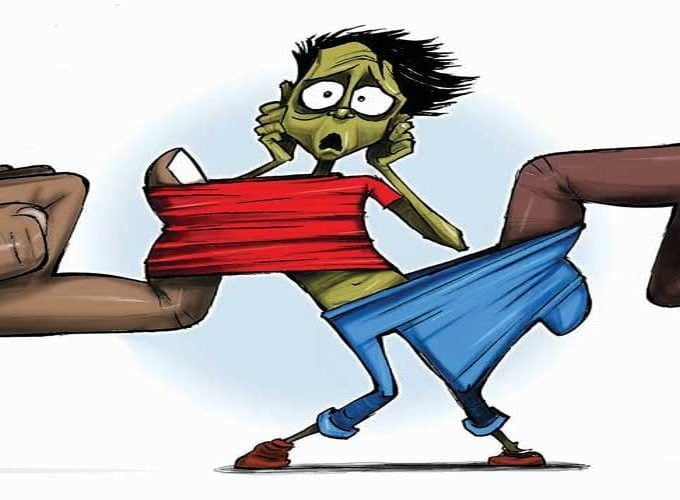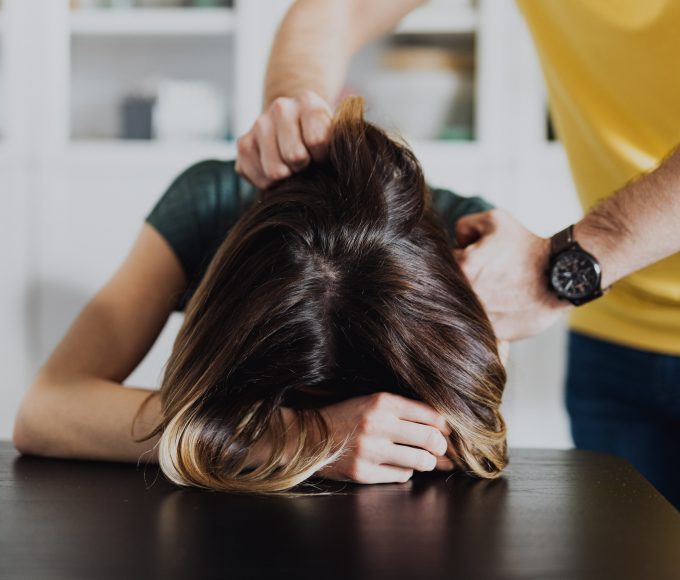Physical violence is a prevalent issue that affects individuals from all walks of life. Physical violence’s causes are multifaceted, ranging from underlying psychological issues to cultural norms that condone violence. The consequences of physical violence can be devastating, including bodily injury, psychological trauma, and even death. This article provides an overview of physical violence, including its causes, consequences, and potential interventions. By understanding the complex factors that contribute to physical violence, we can work towards creating a safer and more peaceful society.
What is Physical Violence
Violence is a social problem that affects people of all ages, genders, races, and cultures. Physical violence, in particular, is a form of aggression that involves using physical force to harm or injure another person. This type of violence can have severe consequences, both for the victim and the perpetrator. This blog post will explore the causes of physical violence, its products, and some possible solutions to prevent it.
Definition of Physical Violence:
Physical violence refers to using force that causes bodily harm, injury, or pain to an individual. It can involve hitting, punching, kicking, choking, slapping, or any other form of physical force that causes harm.
Types of Physical Violence:
- Domestic Violence: Domestic violence is a type of physical violence that occurs within a domestic setting, such as a home. It can involve physical abuse between intimate partners, spouses, siblings, parents, children, or other family members. Domestic violence involves emotional, psychological, sexual, and financial abuse.
- School Violence: School violence is physical violence that occurs within a school or educational setting. It can include bullying, physical fights, assaults, other forms of violence between students, and violence directed at teachers and staff.
- Workplace Violence: Workplace violence is physical violence that occurs in a workplace setting. It can involve assaults, threats, and other forms of violence directed at employees by coworkers, customers, or others. This type of violence can include physical harm and verbal or emotional abuse.
Who is at Risk of Physical Violence?
Physical violence can happen to anyone regardless of gender, age, or socioeconomic status. However, certain groups of people may be at higher risk of experiencing physical violence than others.
- Gender and Physical Violence: Gender is a significant factor when it comes to physical violence. Women are more likely than men to experience physical violence, especially in the context of domestic violence. Men are more likely to be the perpetrators of physical violence. However, it is essential to note that men can also be victims of physical violence.
- Age and Physical Violence: Age is another factor that can increase the risk of physical violence. Children and young adults are more vulnerable to physical violence, especially at home or school. Older adults are also at a higher risk of physical violence, especially in institutions or nursing homes.
- Socioeconomic Status and Physical Violence: Socioeconomic status is also a factor that can increase the risk of physical violence. People in poverty, homeless, or marginalized communities are at a higher risk of physical violence. They may also have limited access to resources and services that can help them if they experience physical violence.
Causes of Physical Violence
Physical violence can have various causes, and the factors that contribute to it are often complex and multifaceted. Here is a brief overview of some of the common causes of physical violence:
- Biological factors: Biological factors may contribute to physical violence, such as brain injuries or abnormalities, hormonal imbalances, or genetics. For example, research has shown that individuals with lower serotonin levels, a neurotransmitter that affects mood and behavior, may be more prone to violent behavior.
- Psychological factors: Psychological factors can also contribute to physical violence. Individuals with certain personality disorders, such as borderline or antisocial personality disorder, may be more prone to aggressive behavior. Additionally, experiences of trauma, abuse, or neglect can increase the risk of violent behavior.
- Social factors: Social factors can also play a significant role in physical violence. For example, individuals who grow up in violent households or communities may be more likely to engage in violent behavior themselves. Other factors such as poverty, unemployment, substance abuse, and exposure to media violence can also contribute to physical violence.
It’s important to note that these factors don’t necessarily act in isolation but can interact with each other in complex ways to increase the risk of physical violence. Effective prevention and intervention strategies must consider these factors and holistically address them.
Consequences of Physical Violence
Physical violence can have severe consequences on an individual’s health and well-being. The following are the details of the biological effects of physical violence:
- Injuries and Disabilities: Physical violence can cause many injuries, such as bruises, cuts, fractures, and internal injuries. These injuries can lead to long-term disabilities, such as paralysis, loss of limb function, and brain damage.
- Chronic Pain and Health Problems: Physical violence can cause chronic pain lasting for years or even a lifetime. It can also lead to various health problems, such as cardiovascular disease, gastrointestinal problems, and mental health issues, such as anxiety and depression.
- Death: Physical violence can lead to fatal injuries, including traumatic brain injuries, internal organ damage, and severe bleeding. These injuries can result in death immediately or after a period.
In addition to the physical consequences, physical violence can also have psychological and social effects. Victims may experience fear, anxiety, and emotional distress, which can impact their mental health and well-being. They may also have difficulty maintaining healthy relationships, finding employment, and accessing healthcare services.
Psychological Consequences of Physical Violence
Physical violence can have severe psychological consequences on the victims. Here are some details on some of the most common psychological effects of physical violence:
- Trauma and PTSD: Physical violence can lead to trauma, resulting in Post-Traumatic Stress Disorder (PTSD). Trauma can be caused by experiencing or witnessing a violent event, leading to intense fear, helplessness, and horror. PTSD is a mental health disorder that can develop after experiencing a traumatic event, and it is characterized by symptoms such as flashbacks, avoidance behavior, hyperarousal, and negative mood. Victims of physical violence may be at an increased risk of developing PTSD.
- Depression and Anxiety: Physical violence can also lead to depression and anxiety. Victims may experience feelings of hopelessness, sadness, and helplessness and have trouble sleeping, eating, and concentrating. The fear of future violence can trigger stress and manifest as panic attacks, obsessive thoughts, and excessive worry.
- Substance Abuse and Addiction: Physical violence can also lead to substance abuse and addiction. Victims may turn to drugs or alcohol to cope with the emotional and psychological pain caused by the violence, which can lead to addiction. Substance abuse can also exacerbate the symptoms of depression, anxiety, and PTSD.
It’s important to note that the psychological consequences of physical violence can be long-lasting, and victims may need professional help to overcome them. Seeking therapy or counseling can be a helpful step toward recovery.
Social Consequences of Physical Violence
Physical violence can have various negative social consequences, including stigmatization and discrimination, breakdown of social support networks, and loss of trust and confidence. Let’s explore each of these in more detail:
- Stigmatization and Discrimination: Physical violence can lead to stigmatization and discrimination against the victim. This can occur due to societal attitudes and beliefs that blame the victim for the violence or due to physical or psychological scars that may be visible to others. Victims of physical violence may be labeled as weak or inferior or somehow responsible for the violence they experienced. This stigma and discrimination can cause the victim to feel isolated and marginalized, leading to difficulties in relationships, employment, and other areas of life.
- Breakdown of Social Support Networks: Physical violence can also result in the breakdown of social support networks. Victims of violence may withdraw from friends and family because they feel ashamed or fear retaliation from their abuser. Additionally, friends and family members may distance themselves from the victim, either because they are unsure how to help or fear getting involved. This breakdown of social support networks can leave the victim feeling isolated and alone, making it more difficult to escape from the cycle of violence.
- Loss of Trust and Confidence: Finally, physical violence can lead to losing trust and confidence in oneself and others. Victims may lose faith in their ability to protect themselves, make sound decisions, or feel powerless to change their situation. They may also lose trust in others, particularly those supposed to protect them, such as law enforcement or healthcare providers. This loss of trust and confidence can have long-lasting effects and may make it more difficult for the victim to seek help or build new relationships.
Physical violence can have serious social consequences, including stigmatization and discrimination, breakdown of social support networks, and loss of trust and confidence. It is essential for society to recognize and address these consequences and to work to support victims of violence and prevent violence from occurring in the first place.
Solutions to Physical Violence
- Prevention Strategies: Preventing physical violence requires a multi-faceted approach that addresses various root causes of violent behavior. Some prevention strategies include:
- Education and Awareness Campaigns: Education and awareness campaigns are the most effective ways to prevent physical violence. This involves educating the public on the causes and effects of physical violence and teaching them about the signs and symptoms of abusive behavior. Such campaigns can be carried out through various mediums, such as public service announcements, posters, social media campaigns, and community events. These campaigns can also include training sessions and workshops for individuals, such as school children, parents, and employees, on recognizing and responding to physical violence.
- Strengthening of Law Enforcement: Another crucial prevention strategy is strengthening the law enforcement agencies responsible for preventing and responding to physical violence. This includes increasing the number of police officers and their training on how to handle domestic violence and other forms of physical violence. Additionally, it ensures that the justice system provides fair and timely trials for perpetrators of physical violence and offers adequate protection for victims and witnesses.
- Creation of Support Services for Victims: The third strategy involves creating support services for victims of physical violence. This includes establishing hotlines, shelters, and counseling services for those affected by physical violence. These support services can help victims to escape abusive situations and provide them with the necessary resources to heal and recover from their experiences. It is also essential to raise public awareness about these support services and make them easily accessible to all victims, regardless of their background or financial status.
Intervention Strategies
Intervention strategies for physical violence depend on the severity of the situation and the individuals involved. Here are some general designs that can help address physical violence:
- Early Intervention and Treatment: Early intervention and treatment can help prevent physical violence from occurring or escalating. This can involve identifying individuals at risk of becoming violent and providing appropriate counseling or other forms of support. Early intervention can also include providing education and resources to individuals with a history of violence to help them better manage their behavior and prevent future incidents.
- Restorative Justice and Rehabilitation: Restorative justice is an approach that focuses on repairing the harm caused by physical violence and restoring relationships between individuals and communities. This can involve providing support and resources to victims and counseling and rehabilitation for individuals who have committed acts of violence. Restorative justice addresses the underlying causes of violence and promotes healing for all parties involved.
- Punitive Measures and Deterrents: Punitive measures, such as fines or imprisonment, can be used as a deterrent to physical violence. However, research has shown that corrective measures are ineffective in reducing violence and can sometimes exacerbate the problem. Therefore, it’s essential to use punitive measures with other intervention strategies, such as early intervention and rehabilitation.
Overall, combining intervention strategies may be most effective in addressing physical violence. This can involve early intervention and treatment, restorative justice and rehabilitation, punitive measures, and deterrents. Addressing the underlying causes of violence, such as poverty, social inequality, and mental health issues, is essential to create a safer and more peaceful society.
Community Involvement
Community involvement is a critical factor in preventing and addressing physical violence. Here are some solutions to physical violence that involve community involvement:
Collaboration and coordination between agencies: Agencies such as law enforcement, social services, and healthcare providers should collaborate and coordinate their efforts to prevent and address physical violence. They should collaborate to share information and resources, identify and respond to risk factors, and support victims and their families.
Involvement of religious and cultural institutions: Religious and cultural institutions can play an essential role in preventing physical violence by promoting positive values and norms that discourage violence. They can also support victims and their families and work with other community organizations to address the root causes of violence.
Empowerment of community members to take action: Community members should be empowered to take action to prevent physical violence. This can involve providing education and training on recognizing and reporting violence, promoting community engagement and involvement, and creating opportunities for community members to participate in prevention and intervention efforts.
Overall, community involvement is essential for preventing and addressing physical violence. We can create safer and more resilient communities by working together and empowering community members.
Conclusion
Physical violence is a severe problem that requires a multi-faceted approach to address. Understanding the causes and consequences of physical violence is the first step in developing effective prevention and intervention strategies. Working together as a community can create a safer and more peaceful society for everyone.
Last worded from Author.
Thank you for reading this blog post on physical violence. We must continue the conversation and take action toward preventing and addressing this issue in our communities. Let’s work together towards a safer and more peaceful world.
FAQs
Physical violence is a form of aggression involving physical force to harm or injure another person. This can include hitting, punching, kicking, or using a weapon to cause harm.
The causes of physical violence are complex and can include biological, psychological, and social factors. Some common causes include a history of abuse, mental illness, substance abuse, and exposure to media violence or community violence.
The consequences of physical violence can be severe and long-lasting. This can include physical injuries, chronic pain, trauma, PTSD, depression, anxiety, and social stigma.
Physical violence can be prevented through education and awareness campaigns, strengthening law enforcement, creating support services for victims, early intervention and treatment, restorative justice and rehabilitation, and community involvement.
If you are a victim of physical violence, it is essential to seek help and support immediately. This can include contacting a local crisis hotline, seeking medical attention, and contacting support services such as counseling or legal aid. Reporting the violence to law enforcement is essential to ensure your safety and prevent further harm.
References
Centers for Disease Control and Prevention. (2021). Understanding Intimate Partner Violence. https://www.cdc.gov/violenceprevention/intimatepartnerviolence/index.html
World Health Organization. (2021). Violence Against Women. https://www.who.int/news-room/fact-sheets/detail/violence-against-women
Also Read







